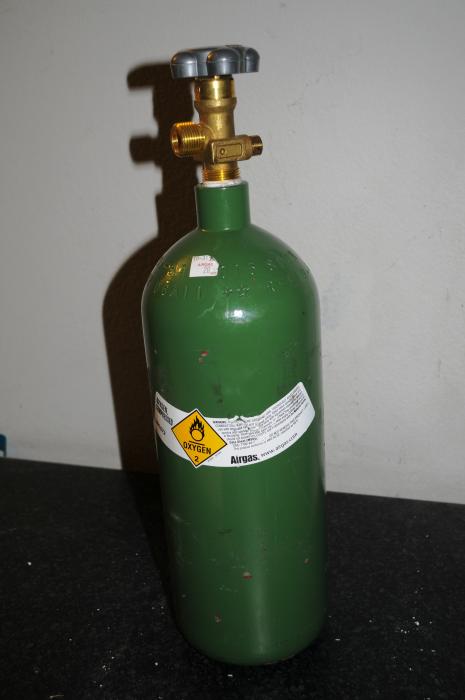Couple of these reponses came in while I was at Airgas. I did indeed purchase a 20cf tank, filled with O2. The tank was $79.19, the fill $20.28. With the "fees" and my local taxes the total was $113.53.
The Harbor Freight tanks are just under $100. Sure, they're glossy and new and all that but only until you get it to the likes of Airgas who will exchange it for one they have. They don't fill tanks that customers bring in. I was aware of this beforehand, just wanted to reiterate it. Since I was there with my car (I usually ride to work) and Airgas Guy had been most helpful I decided not to waste time going home and trying to beat the deal online...only to wait for it to be shippd to me and then have to drive back to Airgas for the fill AND swap to a different tank. So I handed over my credit card.
There's a whole string of numbers stamped around the cylinder but none appears to represent a hydro date; it's probably in code.
One thing that came up in conversation was the cleanliness of the oxygen. No crticism intended of Airgas Guy but any use outside of industrial (ie: culinary) was beyond his scope. Obviously, since the cylinders are constantly being exchanged the history is not known and any reisdual matter inside the tank is not known. Apparently there is a medical oxygen supplier near Airgas that cleans it's tanks but they're more expensive. I decided not to go there on the grounds that Golddiggie uses an industrial tank and Eastok said that bacteria cannot survive in an O2 environment. Is there anything else that can put my mind at rest on this subject? For $5 the in line HEPA filter from Northern Brewer seems like it might be good insurance (?)
So on to the regulator. I passed up on the Airgas regs that I think started at $150. I'm interested in the one on Amazon but the picture is not so clear. It's a 540 fitting so that's good. I suppose I just have the reg closed, open the tank valve and then open the reg to the desired flow rate - but I don't know what that should be. Can that little medical reg cope with the pressure of the tank? Does the reg also have the ability to tell me how much O2 remains in the tank? Or is that what 2 stages do? I think, at a batch very 2 months, the tank might outlive me but I'd hate to be completing some high OG and expensive brew somewhere down the line and not have the 02 to inject because I didn't see it coming (or going!)

But I was (you were) right about the cost of tank, gas and reg being under $150. Of course that doesn't include the stone, tubing/wand, possible HEPA filter etc. Details, details.
But that's initial cost - like when you buy your first set of brewing equipment and hardware and you then use it for dozens of batches. Next time, it'll just be around $20 for the fill. If I ever need it!






